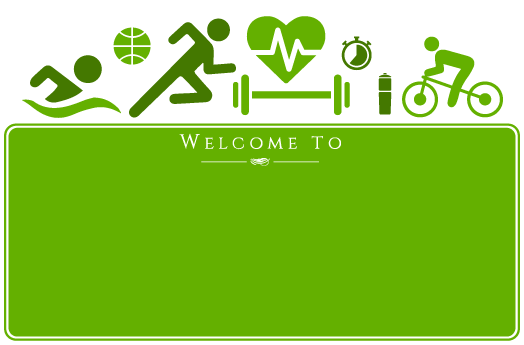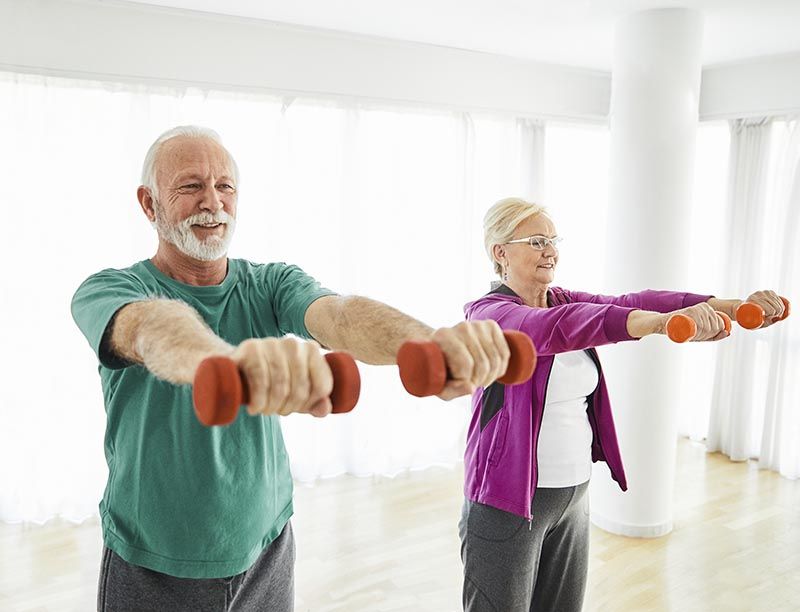







This is the Fitness Website
Consult with a healthcare professional: Before starting any new exercise program, it is crucial to consult with a healthcare professional who can assess your individual health status and provide guidance based on your specific needs and limitations.
Seek guidance from a qualified trainer: Enlisting the assistance of a qualified personal trainer experienced in working with senior adults can greatly enhance your weight training journey. They can design a customized program, teach proper form and technique, and provide ongoing support and motivation.
Start slowly and gradually progress: Begin with light weights or resistance bands and focus on mastering proper form. Gradually increase the intensity and resistance over time as your strength and confidence improve. Listen to your body and never push beyond your limits to avoid injury.
Prioritize safety and proper technique: Pay close attention to safety precautions during weight training. Ensure you warm up adequately, use proper equipment, and maintain correct posture and alignment throughout each exercise. If unsure about proper technique, seek professional guidance to avoid injury.
Embrace consistency and progression: Consistency is key when it comes to reaping the benefits of weight training. Aim for regular sessions, ideally two to three times a week. As you progress, challenge yourself by gradually increasing weights, repetitions, or difficulty levels to continue stimulating muscle growth and improvement.
Conclusion: Senior adults should embrace weight training as a valuable tool for maintaining health, vitality, and independence. By preserving muscle mass, enhancing metabolic health, promoting joint health, boosting cognitive function, and fostering mental well-being, weight training can positively impact every aspect of a senior's life. Embrace the power of strength training, follow proper guidance, and unlock a new level of physical and mental well-being in your golden years.
Here are five beginner-friendly weight training exercises for seniors, along with descriptions and instructions. Please note that it's always important to consult with a healthcare professional before starting any new exercise program, and to use appropriate weights or resistance bands based on your individual capabilities.
Goblet Squat: This exercise targets the lower body, specifically the quadriceps, hamstrings, and glutes.
1. Stand with your feet shoulder-width apart, holding a dumbbell or kettlebell with both hands at chest level.
2. Keeping your chest up and core engaged, lower your hips back and down into a squat position, as if sitting back into a chair.
3. Go as low as your mobility allows, ensuring your knees stay aligned with your toes and not extending past them.
4. Push through your heels to return to the starting position and repeat for the desired number of repetitions.
Chest Press: This exercise targets the chest, shoulders, and triceps.
1. Sit on a sturdy chair or bench with your feet flat on the floor.
2. Hold a dumbbell in each hand and bring them up to shoulder height, palms facing forward.
3. Push the weights forward until your arms are fully extended, without locking your elbows.
4. Slowly bring the weights back to the starting position, keeping control throughout the movement.
Repeat for the desired number of repetitions.
Bent-Over Row: This exercise targets the upper back muscles, including the rhomboids and rear deltoids.
1. Stand with your feet shoulder-width apart and hold a dumbbell in each hand, palms facing inward.
2. Hinge forward at the hips, keeping your back straight and core engaged, and let your arms hang down towards the floor.
3. With your elbows slightly bent, squeeze your shoulder blades together and lift the weights towards your chest.
4. Pause at the top of the movement, then slowly lower the weights back to the starting position.
Repeat for the desired number of repetitions.
Leg Press: This exercise targets the lower body, particularly the quadriceps, hamstrings, and glutes.
1. Sit on a leg press machine with your feet shoulder-width apart and placed on the footplate.
2. Adjust the machine so that your knees are aligned with your toes when your legs are bent at a 90-degree angle.
3. Push the footplate away from you, extending your legs while keeping your back flat against the seat.
4. Slowly bend your knees and lower the footplate back towards your body, maintaining control throughout the movement.
Repeat for the desired number of repetitions.
Overhead Press: This exercise targets the shoulders, upper back, and triceps.
1. Stand with your feet shoulder-width apart, holding a dumbbell in each hand.
2. Raise the weights to shoulder height, palms facing forward and elbows bent.
3. Press the weights overhead, fully extending your arms without locking your elbows.
4. Lower the weights back to shoulder height in a controlled manner.
Repeat for the desired number of repetitions.
Remember, it's essential to start with lighter weights or resistance bands and gradually increase as your strength and comfort level improve. Additionally, always prioritize proper form and technique to ensure safety and effectiveness during your weight training routine.